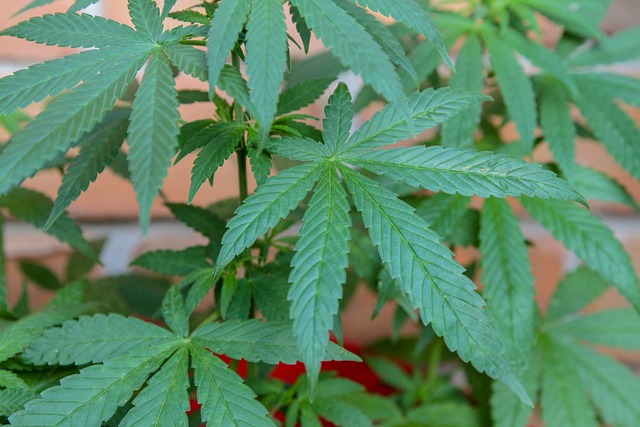THCA, or tetrahydrocannabinolic acid, is a non-psychoactive cannabinoid found in cannabis plants and has become a significant focus within the industry, particularly in Montana where its derivatives are legally recognized. It's the raw form of THC and has therapeutic potential that doesn't induce immediate psychotropic effects, making it a preferred choice for those seeking relief from various conditions without impairment. In Montana, which has legalized cannabis for both medical and recreational use, THCA flower is valued for its health benefits, including anti-inflammatory and pain-relieving properties, and its ability to manage anxiety while preserving cognitive function. The state's regulatory framework supports hemp-derived products with less than 0.3% THC, facilitating research into THCA's potential health advantages. As a precursor to THC, THCA can be activated through decarboxylation to offer various effects based on user needs. Its growing acceptance in Montana reflects its importance as a component of the evolving cannabis market, with ongoing scientific scrutiny into its anti-inflammatory, anti-nausea, anti-oxidant, and neuroprotective qualities. The legal status of THCA in Montana exemplifies its place within the expanding cannabis industry.
Explore the untapped potential of THCA, the raw cannabinoid that’s garnering attention for its unique benefits. In this comprehensive guide, we delve into the distinct properties of THCA flower and how it stands out in the cannabis landscape, particularly within the legal confines of Montana. From understanding its scientific makeup to the intricacies of cultivation, we cover the essentials of THCA, including its effects, benefits, and the transformative role of temperature in unlocking its full potential. As THCA’s legality in Montana paves the way for new experiences, this article serves as a primer for enthusiasts seeking to explore this cannabinoid’s vast terrain, offering insights on consumption, storage, and safety considerations. Join us on this deep dive into the world of THCA flower and its burgeoning future.
- Understanding THCA: The Raw Potential of Cannabis
- THCA Flower: What Sets It Apart from Other Cannabinoids
Understanding THCA: The Raw Potential of Cannabis

THCA, or tetrahydrocannabinolic acid, is a non-psychoactive precursor to THC, the primary psychoactive compound found in cannabis. It’s a cannabinoid that exists naturally within the raw plant matter and is the acidic form of THC. As such, it holds significant potential within the cannabis industry, particularly in states where its derivatives are legal, like Montana. Understanding THCA involves recognizing its role as a therapeutic agent before it undergoes decarboxylation, a process that occurs when heated, converting THCA into THC. This transformation activates THC’s psychoactive properties but also affects its cannabinoid profile.
In Montana, where the legal landscape has embraced the therapeutic and recreational use of cannabis and its derivatives, THCA flower has gained attention for its medicinal benefits without the immediate psychotropic effects. This is particularly beneficial for those seeking relief from various conditions while maintaining cognitive clarity. The raw THCA flower, rich in cannabinoids and terpenes, offers a wide array of potential health benefits, including anti-inflammatory and pain-relieving properties. As researchers continue to explore the full spectrum of THCA’s effects, it becomes increasingly clear that this compound holds substantial promise for those within the legal jurisdictions where its use is permitted, such as Montana.
THCA Flower: What Sets It Apart from Other Cannabinoids

THCA, or Tetrahydrocannabinolic Acid, is a naturally occurring cannabinoid found in the Cannabis sativa plant. Unlike its more famous counterpart, THC, THCA is non-psychoactive, meaning it does not produce the “high” commonly associated with cannabis consumption. This distinction sets THCA apart, as many consumers are now seeking out its potential wellness benefits without the psychoactive effects. In Montana, where the legal landscape has embraced both medicinal and recreational use of cannabis products, THCA flower stands out for its therapeutic properties. It is often used to alleviate pain, reduce inflammation, and combat anxiety, with users reporting a sense of relaxation without impairment. The legality of THCA in Montana aligns with the state’s regulatory framework that allows for the use of cannabis products derived from hemp, provided they contain less than 0.3% THC, the psychoactive compound. This legal distinction has made Montana a hub for those interested in exploring the potential benefits of THCA flower, which is increasingly being recognized for its unique profile compared to other cannabinoids.
Furthermore, THCA flower’s potential benefits extend beyond its non-intoxicating nature. It undergoes decarboxylation when heated, converting into THC, thus offering the option of both pre- and post-activation effects. This versatility is a significant factor for consumers looking to tailor their cannabis experience. Additionally, THCA is believed to have anti-inflammatory, anti-nausea, anti-oxidant, and neuroprotective properties, making it a subject of ongoing scientific research. As interest in cannabinoids continues to grow, the role of THCA flower in this expanding market is becoming ever more prominent, especially within the legal boundaries set forth by states like Montana, where both the agricultural and recreational sectors are adapting to include this unique cannabinoid.
In recent discourse surrounding cannabinoid research, THCA, or tetrahydrocannabinolic acid, has emerged as a subject of considerable interest due to its unique properties and potential benefits. The article has delved into the nuances of THCA flower, highlighting its distinct characteristics that distinguish it within the cannabinoid spectrum. As noted, the legal landscape in Montana offers an opportune environment for enthusiasts and researchers alike to explore the raw potential of THCA. This exploration underscores the importance of understanding the differences between THCA and other cannabinoids, particularly in a regulatory context where legality varies by jurisdiction. The insights presented here serve as a stepping stone for further investigation into the therapeutic and recreational applications of THCA flower, a burgeoning area within the broader realm of cannabis research.
